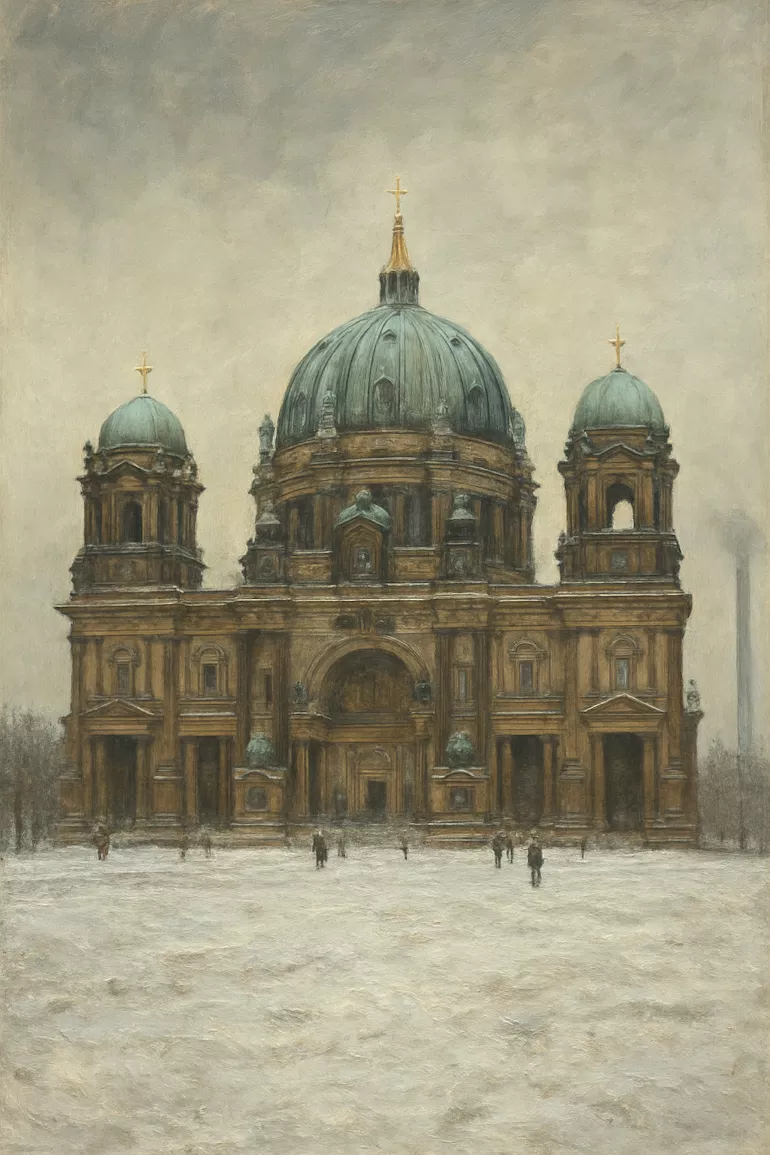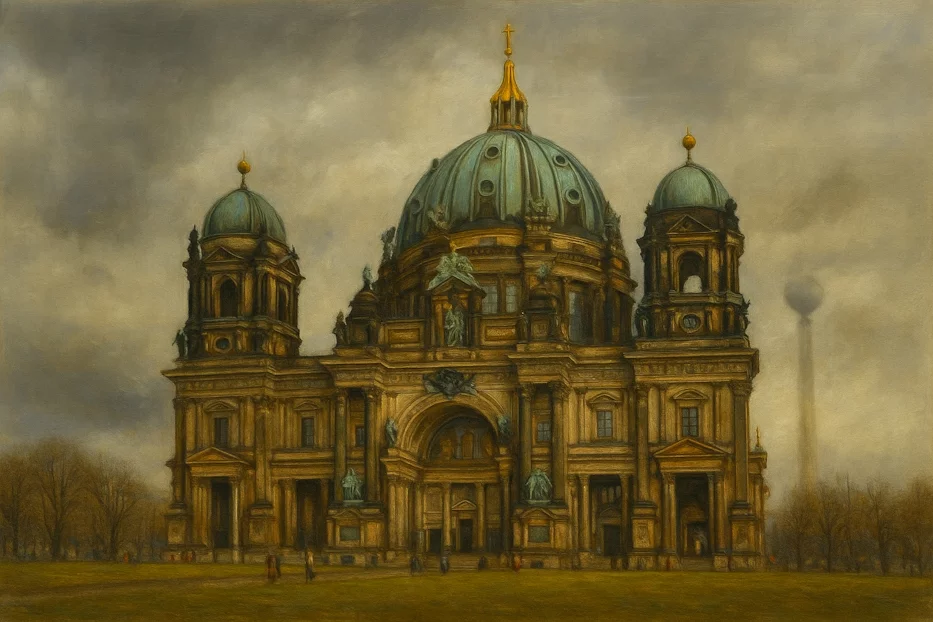Berlin Cathedral, or Berliner Dom, is is far more than a religious building; it is an architectural masterpiece, a symbol of Prussian ambition, and a cultural icon of Berlin.
Towering over Museum Island with its massive dome and ornate facades, the cathedral stands not only as a place of worship but also as a cultural and historical monument. For travelers, architecture lovers, and history enthusiasts, Berlin Cathedral—the largest Protestant church in Germany—is an unmissable site that embodies Germany’s religious and artistic heritage.
Table of Contents
A Brief History of Berlin Cathedral
The history of Berlin Cathedral dates back to the 15th century when a parish church was established on the site. Over time, it evolved into the central Protestant church of Berlin and a symbol of Prussian power. The present-day structure, designed by architect Julius Carl Raschdorff, was completed in 1905 under the reign of Emperor Wilhelm II.
The cathedral was conceived as a Protestant counterpart to St. Peter’s Basilica in Rome. Wilhelm II envisioned a grand church that would not only serve as a place of worship but also display the prestige of the Hohenzollern dynasty, the ruling family of Prussia. Unfortunately, during World War II, the cathedral was heavily damaged by Allied bombing. Restoration began in the 1970s and continued for decades, finally reaching completion in 1993. Today, the cathedral is fully restored and remains one of Berlin’s architectural treasures.
Architectural Style: Neo-Renaissance Splendor
Berlin Cathedral is a striking example of Neo-Renaissance architecture, infused with Baroque elements. Raschdorff’s design emphasized grandeur, symmetry, and ornamentation, reflecting both Renaissance ideals and Prussian ambitions.
The Dome: The most recognizable feature of the cathedral is its central dome, soaring 98 meters (322 feet) high. The dome is crowned with a golden cross and offers panoramic views of Berlin from its viewing platform. The interior of the dome is adorned with mosaics depicting biblical scenes.
Exterior Façade: The cathedral’s façade combines Renaissance revival style with intricate Baroque details. Grand staircases, Corinthian columns, statues of reformers like Martin Luther, and ornate reliefs all contribute to its majestic appearance.
Interior Design: Inside, the cathedral dazzles visitors with its marble altars, stained glass, mosaics, and sculptures. The highlight is the monumental Sauer organ, one of the largest in Germany, with more than 7,000 pipes.
Hohenzollern Crypt: Beneath the cathedral lies the Hohenzollern Crypt, the final resting place of members of the Prussian royal family. The crypt contains over 90 sarcophagi and coffins, some elaborately decorated, offering a glimpse into the dynasty’s history.

Berlin Cathedral on Museum Island
Berlin Cathedral occupies a prominent location on Museum Island, a UNESCO World Heritage Site. Surrounded by some of Berlin’s most important museums, such as the Pergamon Museum and the Altes Museum, the cathedral is part of the city’s cultural and historical heart.
From its steps, visitors enjoy stunning views of the Lustgarten, a public park that historically served as a parade ground and royal garden. The cathedral’s position on the River Spree adds to its picturesque setting, making it one of the most photographed buildings in Berlin.
What to See and Do in Berlin Cathedral
Visitors to Berlin Cathedral can explore much more than just the main nave. Here are the highlights:
- The Dome Climb: A must for visitors who want sweeping views of Berlin. The climb involves 270 steps, but the reward is a breathtaking panorama of the city’s skyline.
- The Nave: The central worship hall features stunning altars, stained glass, and impressive sculptures. Guided tours are available for those who wish to learn more about the art and architecture.
- The Organ: The famous Sauer organ is still used during concerts and church services. Music lovers can attend organ concerts and experience the instrument’s majestic sound.
- The Crypt: History enthusiasts can explore the Hohenzollern Crypt to discover the legacy of the Prussian royal family.
- Exhibitions: The cathedral frequently hosts exhibitions that delve into religious history, art, and architecture.
Religious and Cultural Significance
Although Berlin Cathedral is no longer the central parish church for Berlin, it remains an important Protestant church and is used for worship services, state ceremonies, and concerts. The cathedral is affiliated with the Evangelical Church in Germany and represents the city’s Protestant heritage.
Beyond religion, the cathedral has also become a cultural hub. With its concerts, lectures, and exhibitions, it serves as a bridge between the sacred and the secular, attracting both faithful worshippers and tourists alike.
Practical Information for Visitors
Location: Am Lustgarten, 10178 Berlin, Germany.
Opening Hours: Typically open daily, though hours may vary depending on services or events. Evening concerts are often scheduled.
Tickets: Admission fees apply, with discounts for students, seniors, and groups. Children often have free entry.
Accessibility: The cathedral provides wheelchair access, although the dome climb is not suitable for those with mobility issues.
Best Time to Visit: Early mornings or weekdays are ideal to avoid crowds. Evening organ concerts offer a unique experience.
Tips for Tourists
- Combine Your Visit: Since Berlin Cathedral is on Museum Island, plan a full day exploring the surrounding museums.
- Photography: The exterior is especially photogenic at sunset. Inside, photography is allowed but be mindful during services.
- Concerts: Check the event schedule to attend an organ concert, which offers an unforgettable way to experience the cathedral.
- Guided Tours: To fully appreciate the art, history, and architecture, consider joining a guided tour.
- Clothing: As it is a functioning church, respectful attire is recommended.

